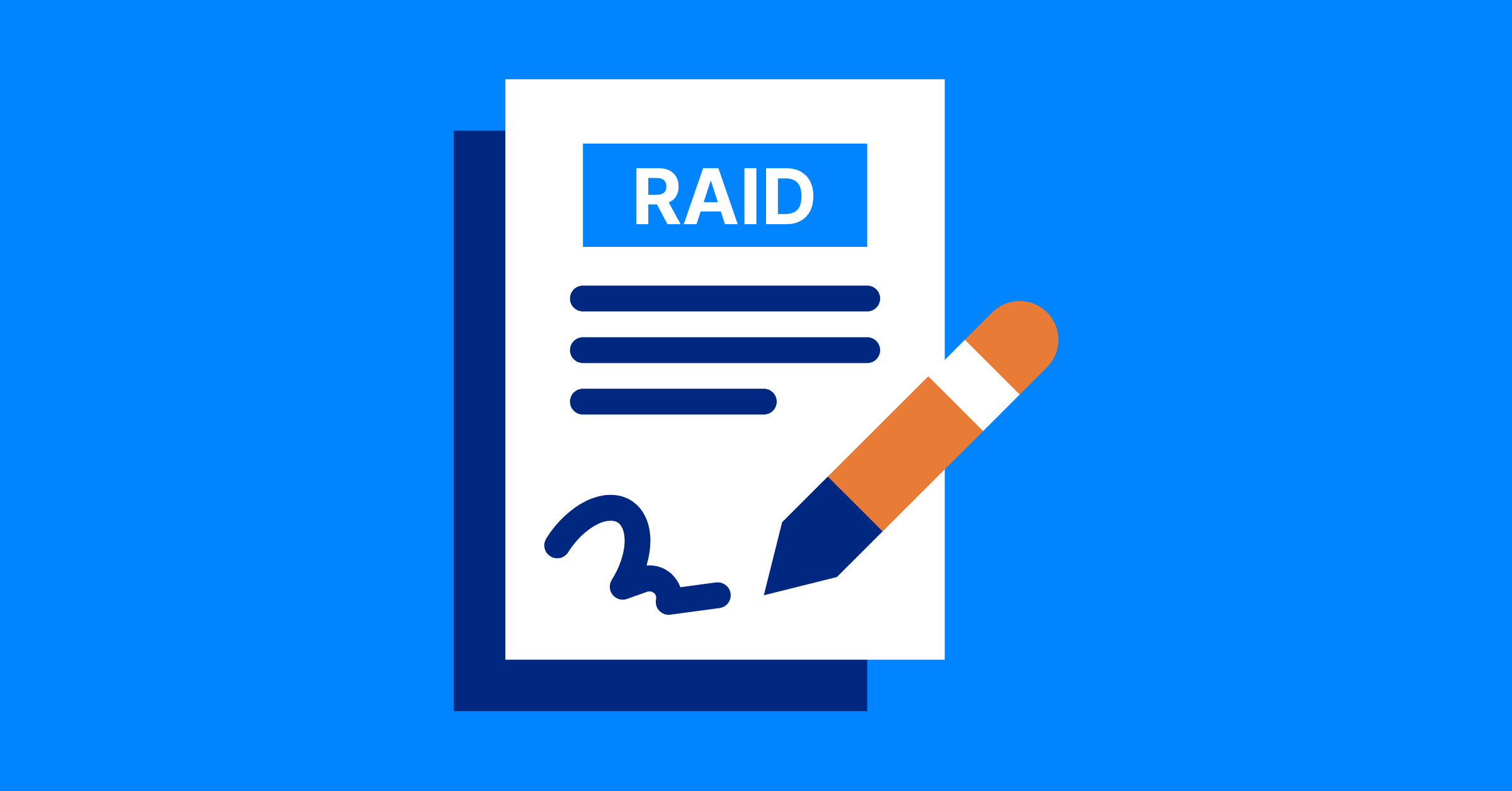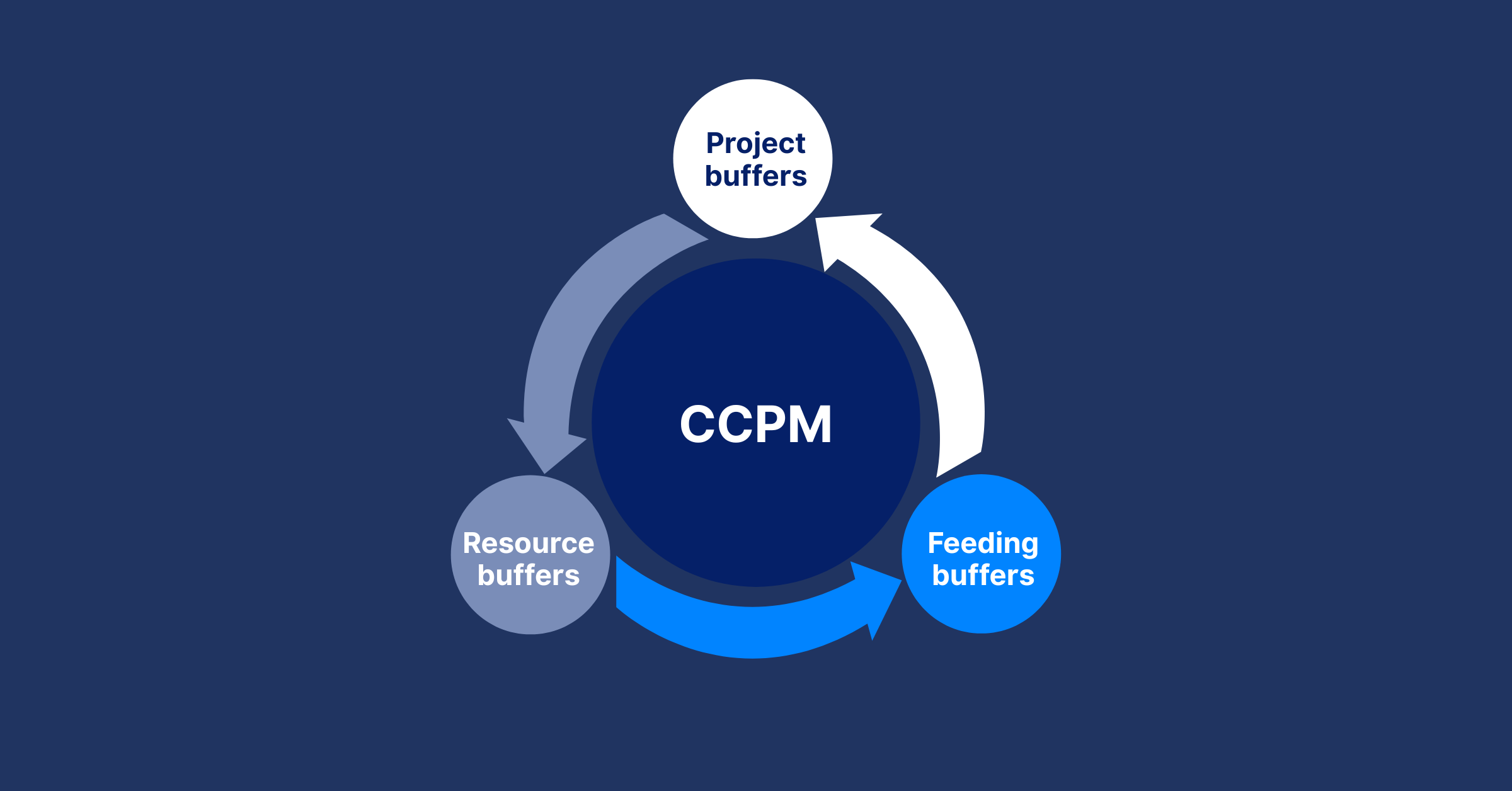Definition of Done (DoD) and Definition of Ready (DoR) in Scrum
Discover how the Definition of Done (DoD) and Definition of Ready (DoR) in Scrum enhance project management by ensuring clarity, quality, and efficient delivery in agile teams.
Scrum is a powerful agile framework that drives collaborative and iterative project management, enabling teams to deliver high-quality outcomes. At its core, the Definition of Done (DoD) and Definition of Ready (DoR) provide structure, clarity, and alignment, ensuring teams operate with precision and deliver value consistently. This blog explores the importance of DoD and DoR in Scrum, offering detailed principles for crafting effective definitions and step-by-step guidance for implementation.
What Is Scrum?
Scrum is an Agile Project Management framework designed to foster collaboration and iterative progress. It emphasizes adaptability, transparency, and continuous improvement, allowing teams to tackle complex tasks in short cycles called sprints. Scrum organizes work through defined roles (Product Owner, Scrum Master, Development Team), events (sprint planning, daily stand-ups, sprint reviews, retrospectives), and artifacts (Product Backlog, Sprint Backlog, Increment). By promoting accountability and flexibility, Scrum enables teams to deliver value incrementally while adapting to changing requirements.
For a deeper dive into Scrum’s principles, check out our comprehensive guide on Scrum.
What Is the Definition of Done (DoD)
The Definition of Done is a checklist the team agrees on to decide when a piece of work, like a feature or task, is fully complete. It’s like a finish line that ensures everything is done properly before moving on. The DoD can change over time as the team gets better or the project needs shift.
Why Is the Definition of Done Important?
The DoD is critical to Scrum for several reasons:
- Maintains Quality Standards: It ensures deliverables meet consistent quality benchmarks, reducing technical debt and rework.
- Fosters Transparency: It aligns the team, Product Owner, and stakeholders on expectations, building trust.
- Enables Predictable Delivery: A clear DoD supports accurate effort estimation and reliable sprint planning.
- Supports Incremental Delivery: In Scrum, each sprint produces a potentially shippable increment. The DoD ensures these increments are complete and usable.
Crafting an Effective Definition of Done
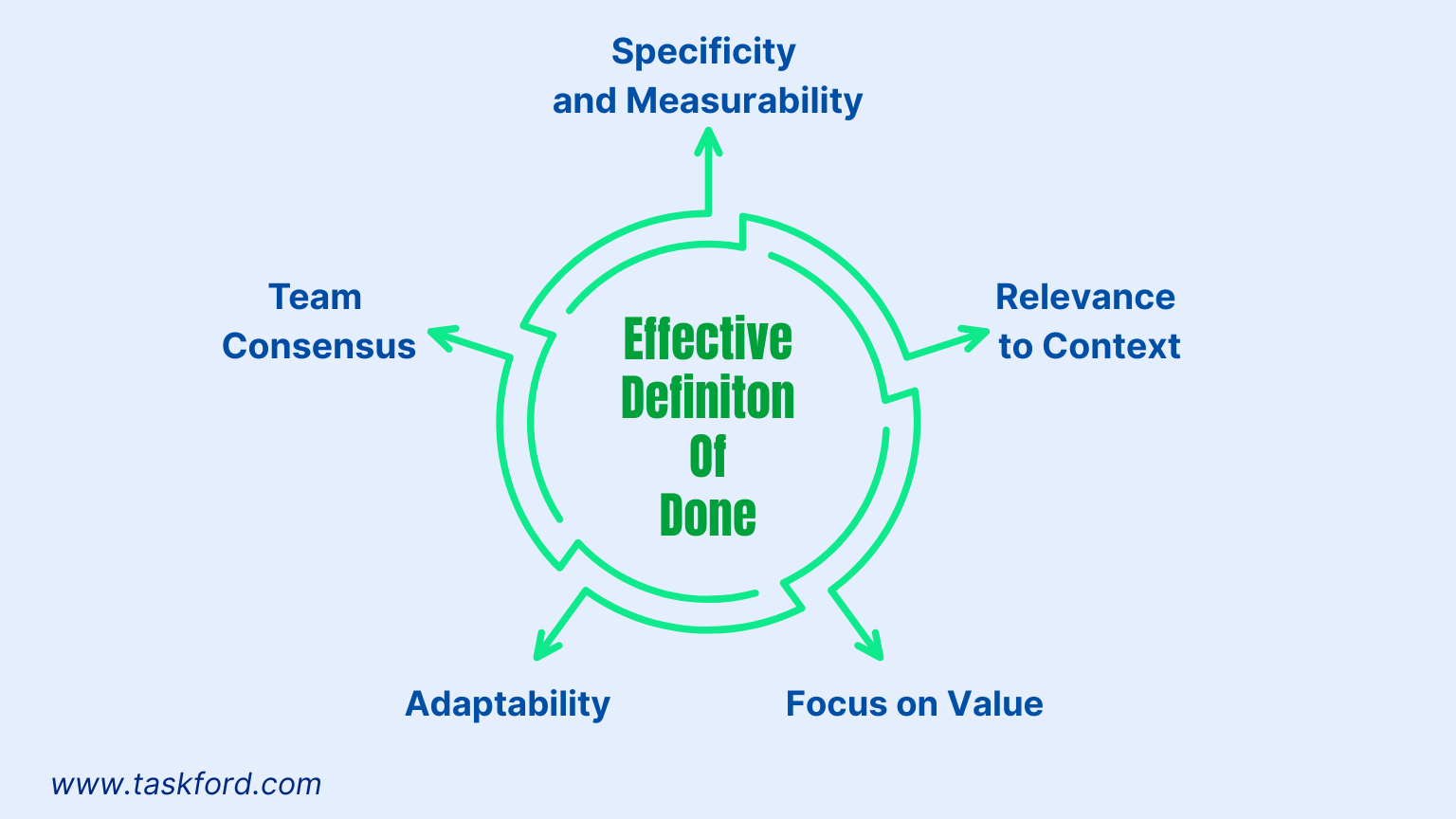
Crafting an effective DoD involves aligning the definition with the project’s goals and the team’s capabilities. Key principles to consider include:
- Specificity and Measurability: Criteria should be precise and verifiable to avoid ambiguity. For example, instead of “code is tested,” specify “unit tests achieve 90% coverage.”
- Relevance to Context: The DoD should reflect the project’s technical and business requirements, such as compliance needs or platform-specific testing (e.g., cross-browser compatibility for web projects).
- Team Consensus: The DoD must be a collaborative agreement to ensure all team members are committed to upholding it.
- Adaptability: The DoD should evolve as the team adopts new tools (e.g., automated testing) or improves processes, ensuring it remains relevant.
- Focus on Value: Criteria should prioritize delivering a functional, usable increment that meets stakeholder expectations.
These principles ensure the DoD serves as a practical, quality-focused framework that supports the team’s goals.
Steps to Create a Definition of Done
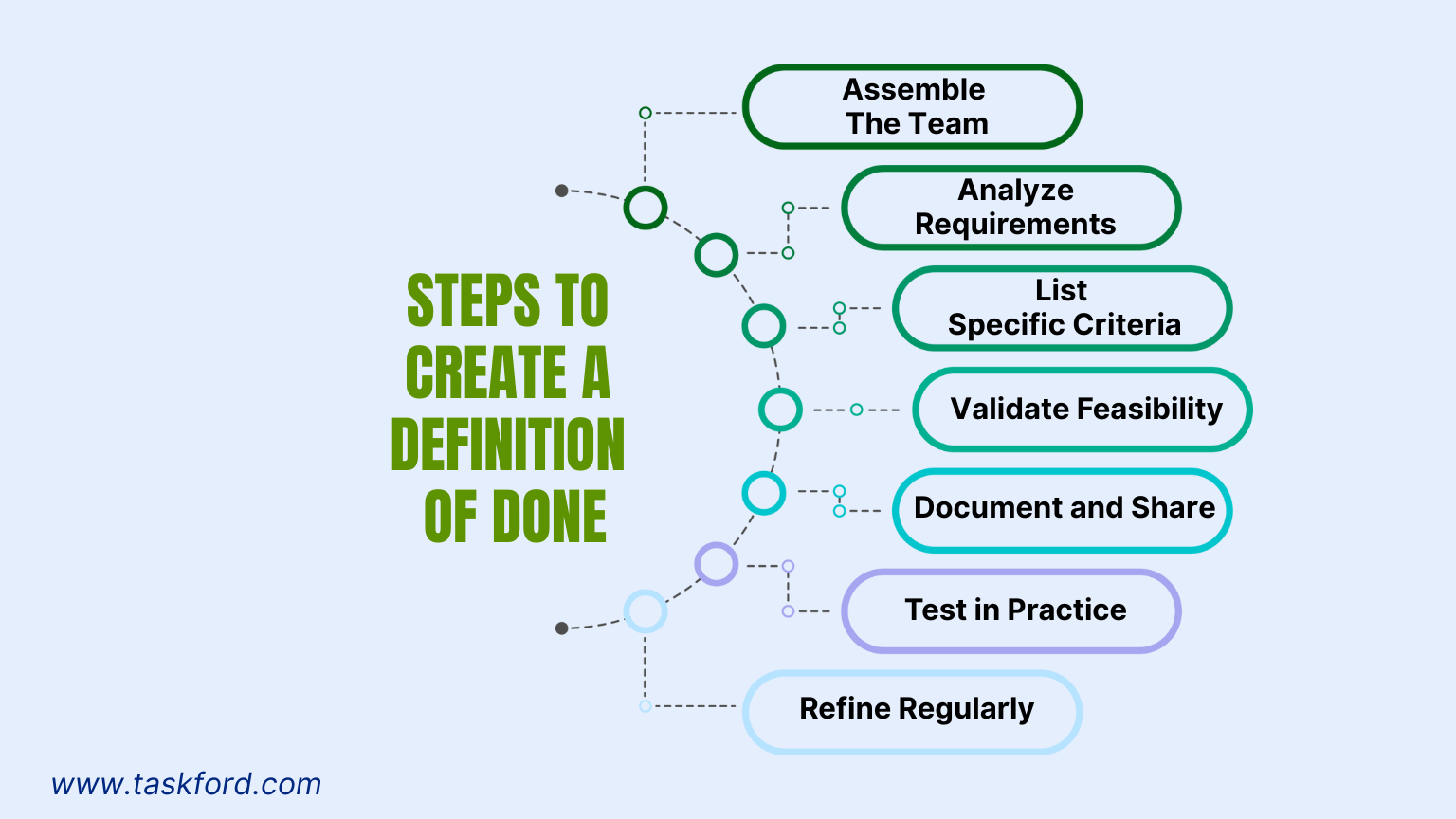
To implement a DoD, follow these actionable steps:
- Assemble the Team: Gather the Scrum team, including developers, testers, the Product Owner, and the Scrum Master, to ensure diverse input.
- Analyze Project Requirements: Review the project’s technical standards, stakeholder expectations, and quality goals to inform criteria.
- List Specific Criteria: Brainstorm measurable criteria, such as “code is peer-reviewed,” “integration tests pass,” or “user documentation is updated.”
- Validate Feasibility: Ensure criteria are achievable within a sprint, balancing rigor with practicality.
- Document and Share: Record the DoD in a shared location, such as a team wiki or project management tool, for easy reference.
- Test in Practice: Apply the DoD during a sprint and evaluate its effectiveness in the sprint retrospective.
- Refine Regularly: Update the DoD based on feedback and evolving team capabilities, ensuring continuous improvement.
Common Problems with DoD
Teams may encounter challenges when crafting or using a DoD:
- Vague Criteria: Ambiguous terms like “code is complete” lead to inconsistent application.
- Overly Rigid DoD: An excessively strict DoD can delay delivery, especially in early sprints.
- Lack of Team Agreement: A DoD defined without team input may face resistance.
- Failure to Evolve: An outdated DoD can become irrelevant as team processes improve.
To mitigate these issues, review the DoD during sprint retrospectives, ensuring it remains aligned with project needs.
What Is the Definition of Ready (DoR)
The Definition of Ready is a checklist to make sure a task or user story is ready to start before a sprint begins. It’s like making sure you have all the ingredients before cooking. The DoR helps the team avoid starting work that’s unclear or incomplete.
Why Is the Definition of Ready Important?
The DoR is essential for effective sprint planning and project management because:
- Clarifies Requirements: It ensures user stories are well-defined with explicit acceptance criteria, minimizing mid-sprint confusion.
- Improves Planning Accuracy: Ready stories enable precise effort estimation, leading to realistic sprint commitments.
- Boosts Team Efficiency: A DoR reduces time spent clarifying requirements during the sprint, allowing focus on development and testing.
- Aligns Stakeholders: It ensures the Product Owner and stakeholders agree on what constitutes a ready story, fostering collaboration.
Crafting an Effective Definition of Ready
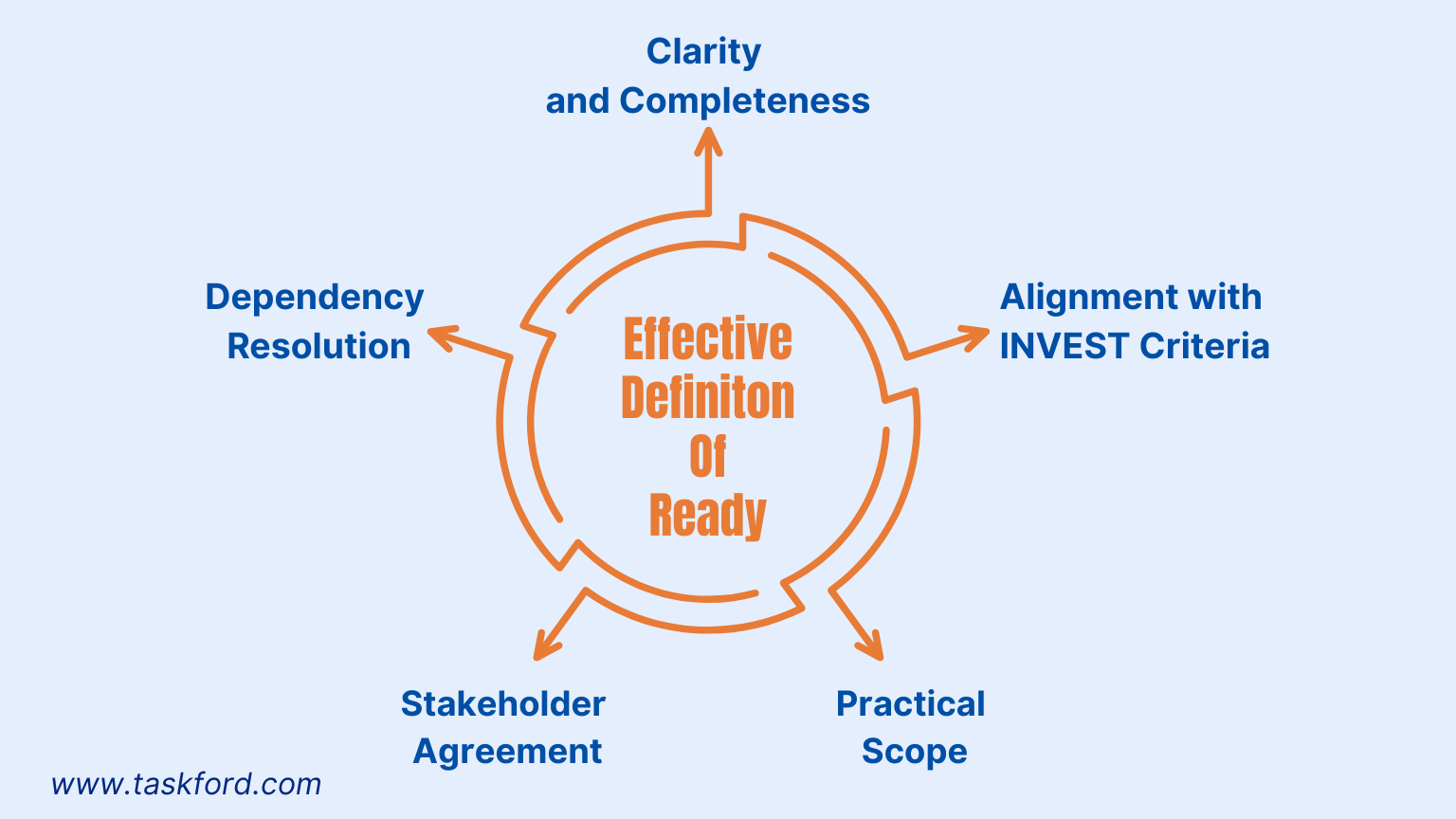
Crafting an effective DoR involves creating a framework that ensures stories are actionable and aligned with project goals. Key principles include:
- Clarity and Completeness: Stories should include clear descriptions, acceptance criteria, and any necessary supporting materials (e.g., mockups).
- Alignment with INVEST Criteria: Stories should be Independent, Negotiable, Valuable, Estimable, Small, and Testable to ensure they are sprint-ready.
- Dependency Resolution: External dependencies (e.g., APIs or third-party services) should be addressed to prevent delays.
(Learn more: Dependencies in Project Management: 4 Types Every Project Manager Should Know)
- Stakeholder Agreement: The Product Owner and team should agree on the story’s readiness to ensure alignment.
- Practical Scope: The DoR should balance thorough preparation with flexibility to avoid blocking valuable stories.
These principles ensure the DoR supports efficient sprint planning and execution.
Steps to Create a Definition of Ready
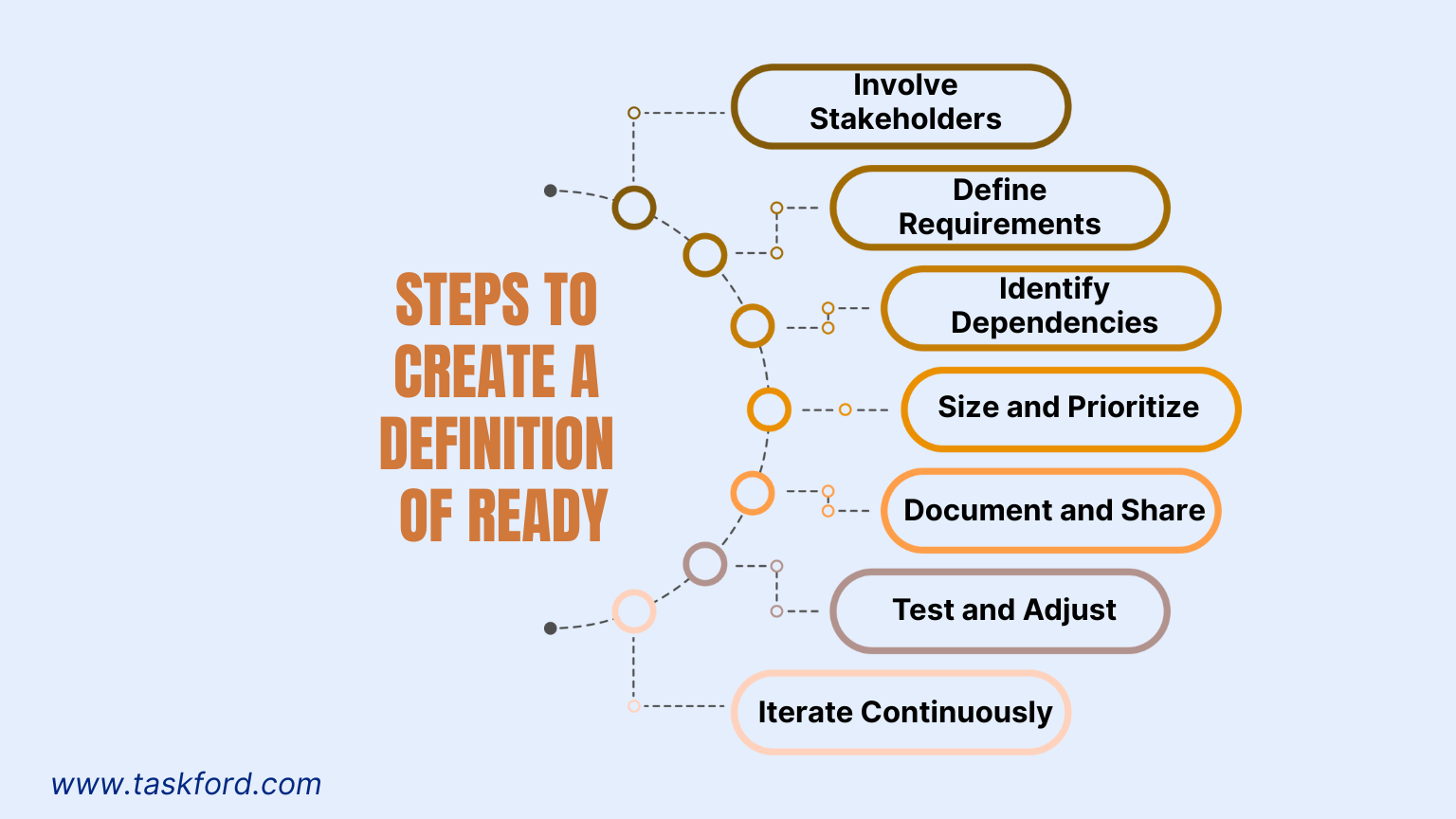
To implement a DoR, follow these actionable steps:
- Involve Key Stakeholders: Engage the Scrum team and Product Owner to incorporate both technical and business perspectives.
- Define Story Requirements: Establish that stories must adhere to INVEST criteria and include clear descriptions and acceptance criteria.
- Identify Dependencies: Ensure external dependencies (e.g., access to data or services) are resolved or mitigated.
- Size and Prioritize: Confirm stories are sized (e.g., using story points) to fit within the sprint’s capacity and prioritized in the Product Backlog.
- Document and Share: Record the DoR in a shared location, such as a team board or project management tools like Asana, ClickUp and TaskFord for reference during backlog refinement.
- Test and Adjust: Apply the DoR during backlog refinement and refine it based on feedback to address any gaps.
- Iterate Continuously: Update the DoR as the team’s processes or project requirements evolve.
Common Problems with DoR
Teams can face challenges with the DoR:
- Too Strict: A DoR that’s too tough can stop important tasks from starting.
- Missing Details: If tasks lack clear goals or resources, they’re not really ready.
- No Team Input: A DoR made only by the Product Owner might not work for the team.
- Too Rigid: Sometimes, teams need to start slightly unclear tasks to keep moving, if risks are low.
Regular planning meetings can help ensure tasks meet the DoD.
DoD vs. DoR: Working Together in Scrum
The Definition of Done and Definition of Ready serve distinct but complementary roles in Scrum. The DoR ensures work entering a sprint is clear and actionable, while the DoD guarantees work exiting the sprint meets quality standards. Together, they help teams deliver great work without wasting time.
Key Differences
| Aspect | Definition of Ready | Definition of Done |
|---|---|---|
| Purpose | Ensures a user story is ready for sprint work. | Ensures a user story meets quality standards. |
| Timing | Applied before sprint planning. | Applied at the end of a sprint or task. |
| Focus | Preparation and clarity of requirements. | Quality and completeness of deliverables. |
| Responsibility | Primarily the Product Owner, with team input. | The entire Scrum team. |
Synergy in Action
Consider a Scrum team building a feature for an e-commerce platform, such as a product search function. During backlog refinement, the DoR ensures the user story includes clear acceptance criteria, mockups, and resolved dependencies (e.g., access to the product database). Once accepted into the sprint, the DoD ensures the feature is coded, tested, documented, and deployed to a staging environment, meeting quality standards. This synergy minimizes ambiguity and ensures a polished deliverable.
Best Practices for Using DoD and DoR
To get the most out of DoD and DoR, try these tips:
- Work Together: Have the whole team help create both definitions.
- Keep Them Visible: Put the DoD and DoR where everyone can see them, like on a team board.
- Update Often: Check and improve both during team reviews.
- Balance Clarity and Flexibility: Make them clear but not so strict they slow things down.
- Explain to Others: Make sure everyone, including customers, understands why these matter.
The Impact on Project Management
The DoD and DoR transform project management by making work clearer, more consistent, and higher quality. They help teams in several ways:
- Reduce Confusion: Clear definitions mean everyone knows what to expect, from the start of a task to its completion, avoiding misunderstandings that can derail projects.
- Boost Accountability: The DoD ensures everyone is responsible for delivering quality work, while the DoR makes sure tasks are ready, so no one wastes time on unclear goals.
- Improve Quality: By setting standards for readiness and completion, teams produce reliable, usable results, reducing bugs and rework that can frustrate customers.
- Enhance Planning: A clear DoR helps teams plan sprints accurately, while the DoD ensures tasks are finished properly, making timelines more predictable.
- Build Trust with Stakeholders: When customers see consistent, high-quality deliverables, they trust the team more, leading to stronger relationships
(Learn more: Project Management Guide)
Conclusion
The Definition of Done and Definition of Ready are foundational to effective Scrum, enabling teams to deliver high-quality increments with clarity and confidence. By applying principles for crafting effective definitions and following structured steps to create them, Scrum teams can enhance their project management practices and achieve better outcomes. Whether you’re new to Scrum or a seasoned practitioner, mastering DoD and DoR will elevate your team’s performance and drive agile success.
Learn more
- What Is a Backlog in Project Management? Key Concepts Explained
- Understanding Agile Methodologies In Project Management: A Comprehensive Guide
- How An Agile Gantt Chart Helps Scrum Teams Manage Projects
Making work simpler,
smarter, and more connected
Join our waitlist and be notified first.

Related Blog
Subscribe for Expert Tips
Unlock expert insights and stay ahead with TaskFord. Sign up now to receive valuable tips, strategies, and updates directly in your inbox.


